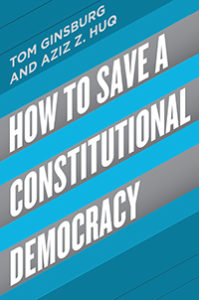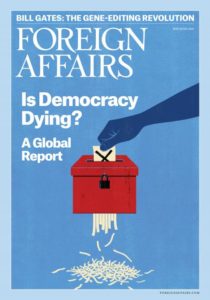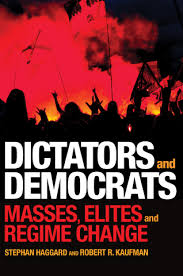 Authoritarian learning facilitates the ‘dismantling of democracy from the inside’, The Washington Post’s Amanda Erickson writes. It used to be that autocrats came to power through coups or by enacting states of emergency, according to Aziz Huq, a University of Chicago law professor and co-author of the book “How to Save a Constitutional Democracy.”
Authoritarian learning facilitates the ‘dismantling of democracy from the inside’, The Washington Post’s Amanda Erickson writes. It used to be that autocrats came to power through coups or by enacting states of emergency, according to Aziz Huq, a University of Chicago law professor and co-author of the book “How to Save a Constitutional Democracy.”
Now, though, autocrats are much more likely to pretend to operate within the democratic system. Rather than seizing power, he said, many times, leaders will keep the trappings of a republic, while incrementally eliminating the institutions that enable competition. It’s the “dismantling of democracy from the inside,” Huq said.
 This is effective for several reasons, Erickson adds:
This is effective for several reasons, Erickson adds:
It’s much harder for activists to rally the troops and stage protests when democracy disappears in drips. When any one shift is small, it’s hard to get people riled up and on the streets. By the time people are engaged, it’s often too late. And international groups and coalitions like the European Union are often reluctant to call out countries that are mostly democratic, for fear of alienating the executive altogether. Sometimes, leaders calculate that it’s better to have an imperfect country operating within a system, participating in some of the institutions, than one totally outside the system.
Prominent social scientists and historians are debating whether the United States could become authoritarian, note Stephan M. Haggard and Robert R. Kaufman, the authors of “Dictators and Democrats: Elites, Masses and Regime Change” (2016). Cass Sunstein’s collection on the topic asks “Can It Happen Here?” Steven Levitsky and Daniel Ziblatt outline “How Democracies Die.” And Yale historian Timothy Snyder draws on interwar history to outline “The Road to Unfreedom.”
 In a recent article in Perspectives on Politics, we assess these risks by looking at how elected leaders in Venezuela, Hungary and Turkey established autocratic control in countries that at one time seemed on the road to democracy. Two similarities are especially striking, they write for The Washington Post:
In a recent article in Perspectives on Politics, we assess these risks by looking at how elected leaders in Venezuela, Hungary and Turkey established autocratic control in countries that at one time seemed on the road to democracy. Two similarities are especially striking, they write for The Washington Post:
- One is the political exploitation of underlying social and economic divisions. ….In all these cases, social polarization — partially stoked by the leaders themselves — encouraged voters to frame their choices in stark, binary terms: between “the people” who supported the autocrats and political opponents who were branded as elitists, criminals and traitors.
- A second important parallel is the incremental weakening of checks on executive power. Authoritarianism did not arrive all at once, such as by coup. Rather, once in office, Chávez, Orban and Erdogan gradually undermined the independence of the courts, turned law enforcement agencies against their political enemies and threatened the press with economic and legal sanctions. Removing these checks cleared the way for unbridled corruption, protection for crony capitalists, and a political playing field sharply tilted toward the leaders and their parties.
“In our study of middle-income countries, we identify a third factor that was crucial to executive backsliding: large legislative majorities that abandoned oversight and ratified the concentration of power in the hands of the president or prime minister,” they add. RTWT







